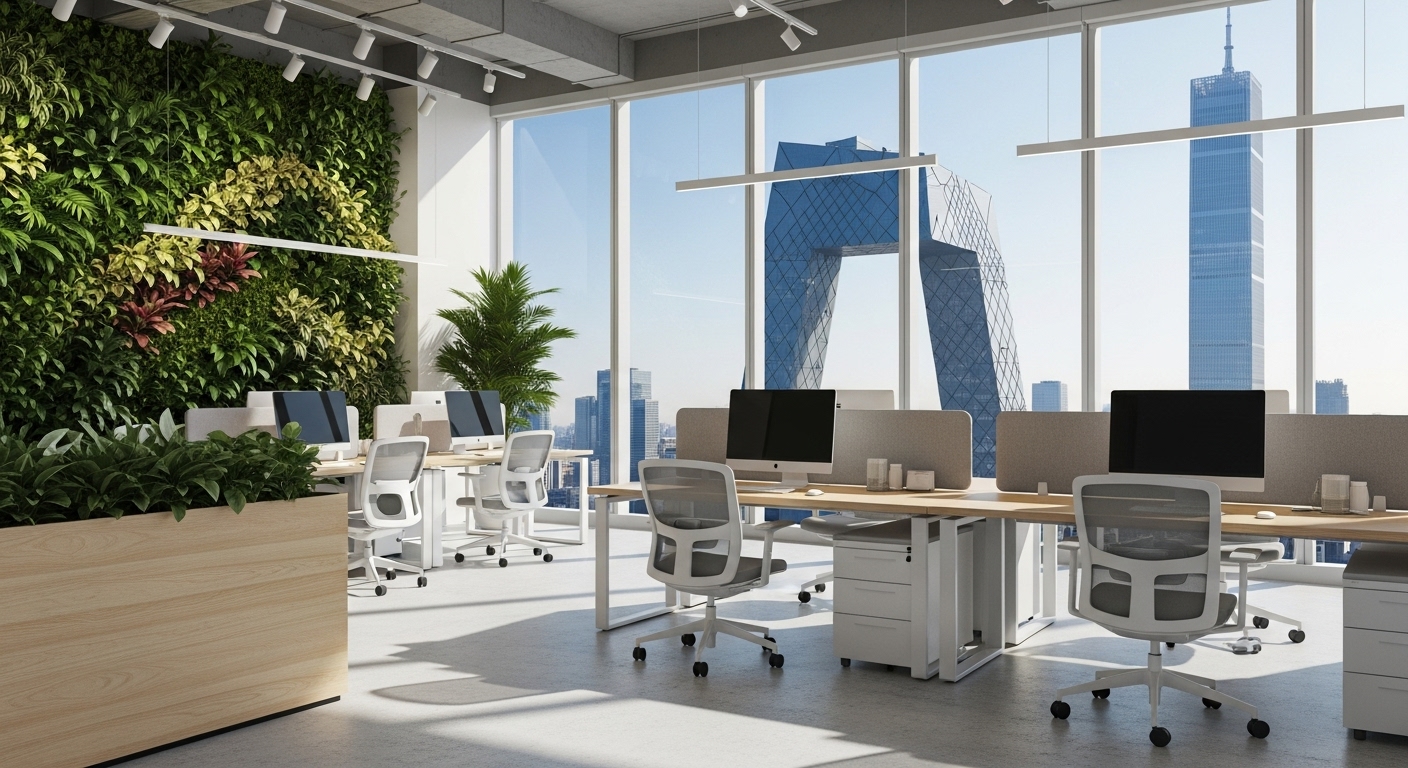In the evolving world of work, the definition of a prime business location has fundamentally shifted. Gone are the days when a prestigious CBD address was the sole benchmark for success. Today, the real measure of a location’s value is its ability to attract and retain top talent. This pivot from postcode to people has made strategic location analysis more critical than ever, especially in a dynamic, global city. For businesses looking to thrive, the challenge is to move beyond reactive site selection and adopt a predictive approach that aligns workspace strategy with the human element. This means understanding commute patterns, talent clusters, and the lifestyle ecosystems that make a location truly desirable.
This guide introduces a predictive framework designed to transform your location analysis from a simple cost-benefit calculation into a powerful tool for talent acquisition and long-term growth. We will explore how data-driven insights into talent distribution, infrastructure, and future urban development can help you pinpoint not just an office, but a genuine talent magnet.
Moving beyond the postcode: Redefining prime location in a hybrid world
The traditional notion of a singular, central headquarters is being challenged by the rise of hybrid and distributed work models. A prime location is no longer just about visibility and accessibility for clients; it’s about creating a destination that employees want to commute to. This paradigm shift requires a more nuanced approach to location analysis. Instead of focusing solely on the central business district, companies are now considering a ‘hub-and-spoke’ model or strategically placing their primary office in areas that offer the best balance of accessibility for a geographically dispersed workforce. This means evaluating locations based on their connectivity to various residential zones, not just their proximity to a historical city center.
This new definition of ‘prime’ is less about a single point on a map and more about the quality of the ecosystem surrounding the workspace. It’s a qualitative assessment that considers factors like work-life balance, employee well-being, and community. A location rich in amenities, green spaces, and cultural venues can offer a compelling reason for employees to choose a day in the office over working from home. Therefore, modern location analysis must weigh the cultural and social fabric of a neighborhood as heavily as it weighs rental costs and square footage. The goal is to find a location that supports not only the work that happens within its walls but also the lives of the people who perform it.
The talent equation: Mapping Sydney’s skills and commute corridors
At the heart of any predictive location analysis is a deep understanding of the talent landscape. For any business in Sydney, the primary objective is to position itself at the nexus of key talent pools. This requires a data-driven approach that goes far beyond generic demographic surveys. Modern analytics tools allow businesses to map where specific skill sets—from software engineers to financial analysts—are concentrated. By overlaying this data with information on public transport networks, including major arteries and the transformative Sydney Metro lines, companies can visualize commute corridors and identify optimal locations that minimize travel time for the majority of their target workforce. This talent-centric mapping is the first step in creating a workplace that is accessible and convenient, immediately boosting its appeal to potential hires.
Furthermore, this analysis should consider not just the current talent distribution but also future trends. Analyzing university graduate data, population growth forecasts, and industry clustering can reveal emerging talent hotspots. For instance, the growth of tech precincts like Tech Central near Central Station creates a powerful gravitational pull for skilled tech professionals. By positioning a workspace within or near such a cluster, a company not only gains access to the existing talent pool but also benefits from the cross-pollination of ideas, networking opportunities, and the specialized ancillary services that develop around industry hubs. This strategic positioning turns the office location into an active asset in the ongoing war for talent.
Infrastructure and amenities: The ecosystem of employee well-being
A great office in a poorly serviced location is a missed opportunity. Today’s workforce expects more than just a desk and a chair; they expect a holistic experience that enhances their work-life integration. An essential layer of location analysis, therefore, involves a thorough audit of the surrounding ecosystem. This includes the availability of high-quality food and beverage options, from quick lunch spots to venues for client dinners. It also encompasses wellness facilities like gyms and fitness studios, childcare centers, and access to green spaces such as parks and waterfront promenades for moments of respite. These amenities are not mere perks; they are fundamental components of a supportive work environment that respects employees’ time and well-being.
A location that is rich in such amenities provides a powerful ‘pull’ factor, making the commute worthwhile. It creates an environment where employees can seamlessly transition between their professional and personal responsibilities, reducing stress and boosting satisfaction. For example, an office located in a vibrant, walkable neighborhood encourages employees to be more active, socialize with colleagues outside the office, and engage with the local community. This fosters a stronger company culture and a deeper sense of connection to the workplace. When evaluating potential locations, businesses must look beyond the building’s lease terms and analyze the vibrancy and utility of the entire block, as this surrounding ecosystem is what ultimately shapes the daily experience of their team.
The connectivity calculus: Analyzing digital and physical infrastructure
In our hyper-connected world, seamless connectivity is non-negotiable. A comprehensive location analysis must perform a dual audit of both physical and digital infrastructure. Physical connectivity pertains to how easily employees, clients, and partners can access the location. This involves a detailed assessment of public transport links—trains, buses, light rail, and ferries—including frequency, reliability, and proximity of stops. It also means evaluating road access and the availability of parking or end-of-trip facilities for those who cycle or run to work. A location that is a nexus of multiple transport options is inherently more valuable as it broadens the potential talent pool and enhances convenience for everyone.
Equally critical is the digital infrastructure. High-speed, reliable internet is the backbone of any modern business. When assessing a location, it’s crucial to investigate the quality of the digital connectivity available in the building and the surrounding area. This includes access to multiple fibre-optic providers, 5G coverage, and the building’s internal network capabilities. A location with robust digital infrastructure ensures that operations run smoothly, from video conferencing to cloud-based computing, thereby preventing productivity bottlenecks. Overlooking this aspect can lead to significant operational friction and place a company at a competitive disadvantage. Both digital and physical connectivity form the foundational pillars upon which a high-performance workplace is built.
Future-proofing your footprint: Predictive analytics in location strategy
Choosing a workspace is a significant long-term investment. A decision made today must remain viable and strategic for years to come. This is where predictive analytics becomes an indispensable tool in location analysis. Instead of relying solely on current data, a forward-looking approach involves analyzing development pipelines, zoning changes, and major public infrastructure projects. For a city in constant evolution like Sydney, understanding the future trajectory of a precinct is crucial. A location that may seem secondary today could become a prime hub in five years due to a new metro station or significant commercial and residential development. By factoring in these future growth indicators, a business can secure a location that will appreciate in value and strategic importance over time.
This predictive lens also applies to demographic and economic trends. By analyzing population growth forecasts, industry migration patterns, and shifting lifestyle preferences, companies can anticipate where future talent pools will emerge. For example, the increasing desire for mixed-use neighborhoods that blend living, working, and recreation is reshaping urban landscapes. Choosing a location that aligns with these long-term societal shifts ensures that the workspace will remain relevant and attractive to the next generation of talent. This strategic foresight transforms location analysis from a logistical exercise into a visionary business decision, future-proofing the company’s physical footprint against market volatility and evolving work cultures.
From data to decision: A practical framework for your location analysis
Synthesizing these diverse data points into a coherent strategy requires a structured framework. A practical approach to location analysis involves a multi-stage process that ensures all critical factors are weighed appropriately. The first step is to define your ideal talent profile. Clearly identify the key skills and roles your business needs to attract. Second, map talent and transit. Use analytics tools to pinpoint where this talent lives and how they commute, identifying key accessibility corridors. This initial phase provides a shortlist of geographically viable zones across the competitive landscape of Sydney.
The third step is to score the ecosystem. For each shortlisted location, create a scorecard that rates the quality and variety of amenities, from cafes and gyms to childcare and green spaces. Fourth, evaluate the infrastructure, assigning separate scores for both physical transit options and digital connectivity resilience. Fifth, analyze future potential by researching planned infrastructure projects and commercial developments that could impact the area’s desirability in the long term. Finally, align with brand and culture. The chosen location must physically embody your company’s values and brand identity. A dynamic tech startup might thrive in a burgeoning innovation district, while a corporate law firm may require the prestige of the traditional CBD. This systematic process transforms a complex decision into a clear, evidence-based choice, ensuring the final location is a strategic asset that powers the business forward.
Choosing a workspace location is one of the most consequential decisions a business can make. In today’s talent-driven market, the right location is far more than a physical space; it is a strategic lever for attracting top performers, fostering a vibrant culture, and driving sustainable growth. By moving beyond outdated, cost-centric metrics and embracing a predictive, multi-layered framework, companies can uncover locations that truly function as talent magnets. This modern approach demands a synthesis of data, from mapping skill clusters and commute corridors to evaluating the richness of local amenities and forecasting future urban development.
This holistic analysis ensures that the chosen workspace is not only efficient and accessible but also an inspiring destination that enhances employee well-being and strengthens their connection to the company. It’s about creating an ecosystem where your team can do their best work and live their best lives. Ultimately, a location chosen with this level of strategic foresight becomes a powerful expression of a company’s vision and its commitment to its people. It’s an investment in a future where the workplace is a competitive advantage, enabling the business to adapt, innovate, and thrive in an ever-changing world.





